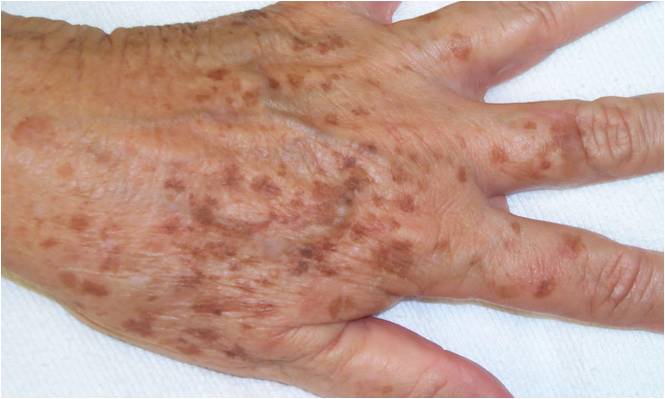These Fats Turn Into Chemical Warfare Agents Inside Your Body

The half-life of fat in the body is estimated to be about 400 days.
This means that a significant amount of the fat you eat today will still be in your body four years from now.
Don’t you think it’s a good idea to pay CLOSE attention to the fat in your diet?
In fact, chances are that you already ingested some of them today!
Why? Because doctors, gurus and marketers are telling you these fats do things that they really don’t… and the research proves it!
Now, I could sit here and give you a recap of what these ‘gurus’ are saying and waste your time discussing the poorly conducted research studies they cite in support of their perspective, but I’m sure you’ve already heard it directly from them.
Instead, let’s get right down to the most important information.
When There’s Controversy In The Literature, It’s Time To Go Back To The Basics
There is too much controversy among the recently published articles and popular opinion to make any real sense of fish oil and cod liver oil’s true nature.
And especially now that there is a giant industry behind fish oil and cod liver oil it wouldn’t be surprising to find an “invisible hand” influencing these articles.
The Basics – REAL Science
Chemically, the EPA and DHA in fish oil are poly-unsaturated fatty acids.
They differ from saturated fatty acids in their chemical structure and reactivity.
Compared to saturated fats, poly-unsaturated fats are VERY reactive and unstable both inside and outside the body.
Let’s get a visual on this…

Each of the areas circled above in red represents a double bond. EPA has five double bonds and DHA has six double bonds.
It is these double bonds that make the poly-unsaturated fats very reactive. The more double bonds, the more reactive the fat. We’ll get into the types of reactions soon because that will explain just what kind of havoc they are wreaking inside your body.
Compare these polyunsaturated fats to the saturated fat, stearic acid.

Notice how saturated fats don’t have any double bonds. They still react inside the body, but mainly with the help of enzymes, allowing the body greater control over them.
How Polyunsaturated Fats React Inside The Body
Lipid Peroxidation

Polyunsaturated fats react by a process called lipid peroxidation.
Lipid peroxidation is a chain reaction that causes damage to cell membranes, cellular components, DNA and RNA.
The end products of lipid peroxidation are known mutagenic and carcinogenic compounds.
One byproduct of this reaction is acrolein, which was used as a chemical warfare agent during World War I.
Additionally, lipofuscin formed from lipid peroxidation is closely associated with age spots on the skin, Alzheimer’s, Parkinson’s, Lou Gehrig’s disease and many other degenerative diseases.
The best way to stop the chain reaction of lipid peroxidation is to stop ingesting polyunsaturated fats.
There are also herbs that boost the production of glutathione-S-transfersase, the body’s most powerful anti-oxidant. These will be discussed later.
Polyunsaturated Fat’s Effect on Tumor Growth
One popular recommendation made by doctors and nutritionists is to increase the amount of omega-3 fats in your diet. They justify this recommendation by claiming that omega-6 oils are high in the American diet and that they are ‘bad’ fats, contributing to inflammation.
Their idea is that by increasing the omega-3’s you end up with a more favorable ratio of omega-3 fats to omega-6 fats and therefore decreased inflammation.
This hypothesis has been proven ineffective in the real world.
In an experiment testing the dietary omega-3 to omega-6 ratio on mammary tumor development, researchers found that “[a]s the omega-3/omega-6 ratios were elevated, the total number and weight of tumors increased gradually”.
These researchers concluded that “the increase in the omega-3/omega-6 ratio of dietary fat with a fixed polyunsaturated-to-saturated fat ratio cannot suppress the mammary carcinogenesis but can promote development of tumors.”1
“Dietary fat was fed to the rats as 10% of the total feed weight, starting two weeks before the initiation. An increase in the n-3/n-6 ratio did not suppress the incidence or reduce the latency of mammary tumor development. The number and weight of mammary tumors per tumor-bearing rat tended to be large in the group with an n-3/n-6 ratio of 7.84 compared with those in the other groups. As the n-3/n-6 ratios were elevated, the total number and weight of tumors increased gradually.” “These results suggested that the increase in the n-3/n-6 ratio of dietary fat with the fixed PUFA-to-saturated fatty acid ratio cannot suppress the mammary carcinogenesis but can promote development of tumors, despite reduced PGE2 concentration in the tumor.”
Polyunsaturated Fat’s Make Your Brain Swell
Just because your brain gets bigger doesn’t make it work better!
The omega-3 fats linolenic acid (18:3) and docosahexanoic acid (22:6) commonly known as DHA are known to cause brain swelling.
The omega-6 fats linoleic acid (18:2) and arachidonic acid also cause the brain to swell.
The saturated fats, palmitic acid (16:0) and oleic acid (18:1), have no such effect.2
Monounsaturated fats like olive oil are also safe to consume as they do not cause brain edema.3
Polyunsaturated Fat Suppresses the Immune System
Polyunsaturated fats are so good at suppressing the immune system that they are recommended for feeding to organ transplant receivers so their body does not reject the new organ.
In specific cases, mostly acute issues, short-term immunosuppression is necessary.
Long-term suppression of the immune system is a sure way to a weak body and chronic disease because the immune system’s function is to protect the body and keep it strong.
What Can We Learn From Longevity Studies?
Calorie restriction has proven to be the best way to increase longevity.
One common observation to all calorie-restricted animals is that there is a decrease in the age-related accumulation of fatty acids with 4 and 5 double bonds.4
Remember, EPA has 5 double bonds and DHA has 6. These are found in large quantities in fish oil and cod liver oil. There are no exceptions.
References
- Nutr Cancer 1998;30(2):137-43. Effects of dietary n-3-to-n-6 polyunsaturated fatty acid ratio on mammary carcinogenesis in rats. Sasaki T, Kobayashi Y, Shimizu J, Wada M, In’nami S, Kanke Y, Takita T.
- J Neurochem 1980; Oct;35(4):1004-7. Transient formation of superoxide radicals in polyunsaturated fatty acid-induced brain swelling. Chan PH and Fishman RA
- Science 201, 358-369, 1978. Brain edema: Induction in cortical slices by polyunsaturated fatty acids. P. Chan PH and Fishman RA
- Biochem Biophys Res Commun. 1987 Jun 30;145(3):1185-91. Anti-lipoperoxidation action of food restriction. Laganiere S, Yu BP.